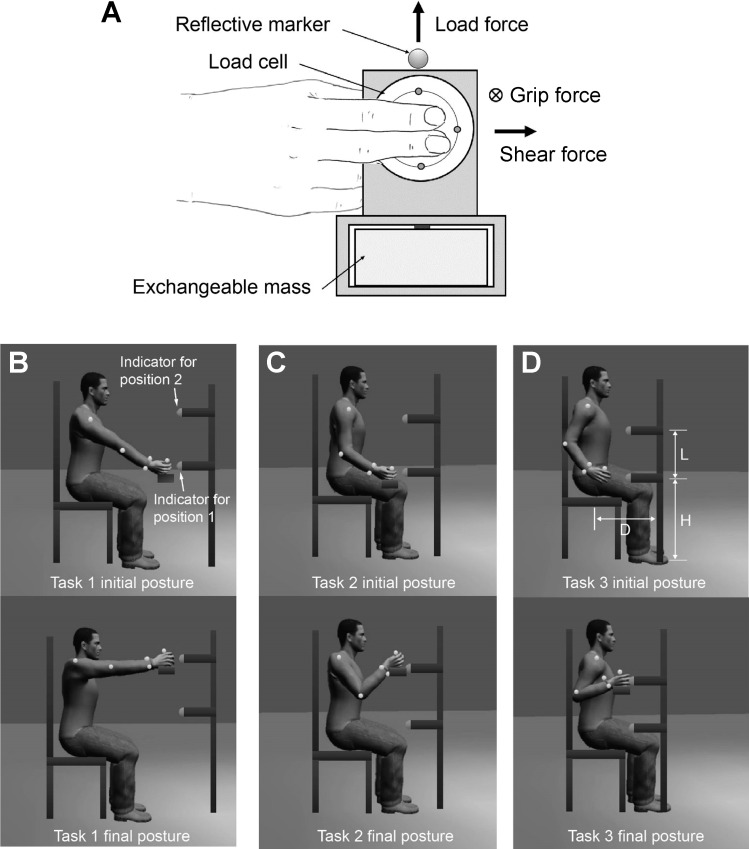Fig. 1.
Experimental setup and target tasks. A: instrumented object used in the experiment. B–D: lifting tasks performed by subjects. A 6-degrees-of-freedom load cell recorded fingertip forces in three directions: grip force (normal to the surface), load force (vertical), and shear force (horizontal). During the experiment, the horizontal distance from the body to the target (D) was changed for each task so that distinct types of shoulder and elbow joint movements were used for the three tasks. For example, the lifting movement was performed primarily through shoulder flexion in task 1, while elbow flexion primarily contributed to the lifting movement in task 3. While the vertical locations of these indicators (H) were adjusted across the tasks, the distance between the two indicators (L) remained unchanged (so that the end-point trajectories of the three tasks were similar).

